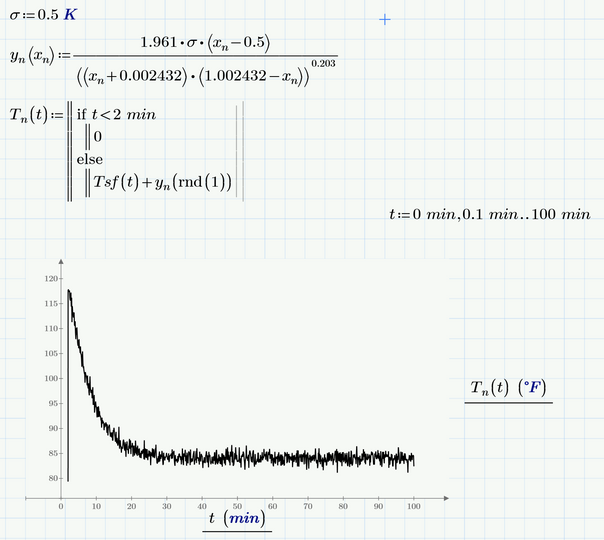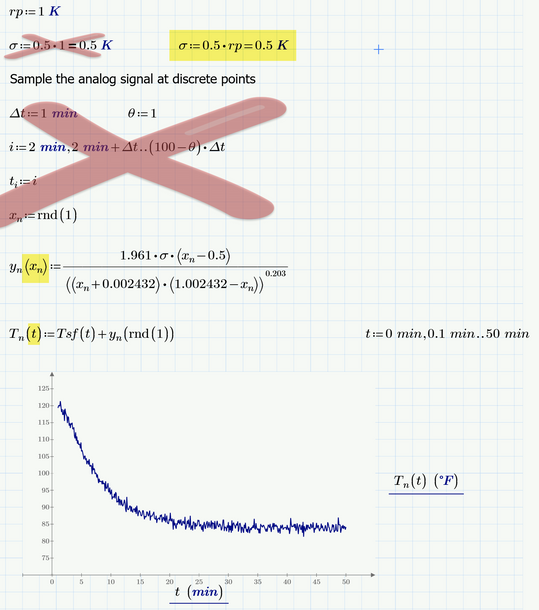Community Tip - Your Friends List is a way to easily have access to the community members that you interact with the most! X
- Subscribe to RSS Feed
- Mark Topic as New
- Mark Topic as Read
- Float this Topic for Current User
- Bookmark
- Subscribe
- Mute
- Printer Friendly Page
There are too many ranges variables
- Mark as New
- Bookmark
- Subscribe
- Mute
- Subscribe to RSS Feed
- Permalink
- Notify Moderator
There are too many ranges variables
Hello everyone,
In scenario 4, I got everything correctly. However, when I tried to graph the plot. There were an issue with "too many range variables".
I read some posts that recommend to change the number of points. However, it was invisible to click on. Would you guys please help me with this?
Thank you so much
Solved! Go to Solution.
- Labels:
-
Chemical_Engineering
Accepted Solutions
- Mark as New
- Bookmark
- Subscribe
- Mute
- Subscribe to RSS Feed
- Permalink
- Notify Moderator
You still have the wrong definition of sigma! You compare 0.5*1 with 0.5K and the result is zero (because they are not equal) and this zero is assigned sigma. Your sigma is zero! Give it a try. Furthermore in the definition of y.n you used sigma as if it were a function.
And the way you defined and used x.n your "noisy" signal would have used the very same random number for every time - not very noisy 😉
Here is a way to do it. Do you really mean T.n to be 0 (zero what - K, °F, Delta°F,..?) for times smaller than 2 minutes? You may replace the 0 by NaN (which suppresses plotting) or by Tsf(2 min).
- Mark as New
- Bookmark
- Subscribe
- Mute
- Subscribe to RSS Feed
- Permalink
- Notify Moderator
- Mark as New
- Bookmark
- Subscribe
- Mute
- Subscribe to RSS Feed
- Permalink
- Notify Moderator
Do you have any recommendation for this? 😞 The Tsf was calculated in scenario 3. I'm not sure why the Tn(ti) doesn't work
- Mark as New
- Bookmark
- Subscribe
- Mute
- Subscribe to RSS Feed
- Permalink
- Notify Moderator
Martin Hanák
- Mark as New
- Bookmark
- Subscribe
- Mute
- Subscribe to RSS Feed
- Permalink
- Notify Moderator
Hello Martin,
Sigma unit is K so yn is also K. I have added the unit to K and Tn(i) still doesnt work. It probably because of my the function or something.
thank you so much for the feedback
- Mark as New
- Bookmark
- Subscribe
- Mute
- Subscribe to RSS Feed
- Permalink
- Notify Moderator
Hi,
you must define yn as function !!!
Martin Hanák
- Mark as New
- Bookmark
- Subscribe
- Mute
- Subscribe to RSS Feed
- Permalink
- Notify Moderator
Looking for something like this?
- Mark as New
- Bookmark
- Subscribe
- Mute
- Subscribe to RSS Feed
- Permalink
- Notify Moderator
Hello,
it looks really good. But the Tn is T noise so it would start at 2 and the time interval is ti = 2,3...99. I have some new updated here.
You are life saver for sure 🙂
Thank you so much.
- Mark as New
- Bookmark
- Subscribe
- Mute
- Subscribe to RSS Feed
- Permalink
- Notify Moderator
You still have the wrong definition of sigma! You compare 0.5*1 with 0.5K and the result is zero (because they are not equal) and this zero is assigned sigma. Your sigma is zero! Give it a try. Furthermore in the definition of y.n you used sigma as if it were a function.
And the way you defined and used x.n your "noisy" signal would have used the very same random number for every time - not very noisy 😉
Here is a way to do it. Do you really mean T.n to be 0 (zero what - K, °F, Delta°F,..?) for times smaller than 2 minutes? You may replace the 0 by NaN (which suppresses plotting) or by Tsf(2 min).
- Mark as New
- Bookmark
- Subscribe
- Mute
- Subscribe to RSS Feed
- Permalink
- Notify Moderator
Hello,
Got it. I'm working on it again now. I mean at Tn won't generate the first signal at 2mins. so from 0-2 mins, Tsf is the actual sensor temperature (Tsf).
I think the issue here is t(time) range, because the Tn will send the mixed signal at t=2min while Tsf start at 1min. I also attached the picture that I supposed ti generate
Thank you so much
- Mark as New
- Bookmark
- Subscribe
- Mute
- Subscribe to RSS Feed
- Permalink
- Notify Moderator
i GOT ITTTTTT. We just need to graph this with ti not t. yayayayayayayya









